Observing Campaigns
Currently, MLSO has two instruments in operation - UCoMP and K-Cor. Each one has different modes of operation that may aid in specific investigations. UCoMP is the most flexible and has accepted special campaign requests. Examples of UCoMP data products can be found on the UCoMP instrument page. HAO encourages special observation requests to maximize scientific discovery for the solar and heliospheric community.
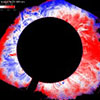
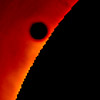
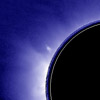
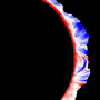
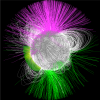
Special Observation Requests
Most Recent Observing Campaign
Solar Orbiter (SolO) Remote Sensing Campaign: Oct 8 to Nov 7, 2022
UCoMP and K-Cor are providing observations in support of this SolO campaign. UCoMP is providing data on magnetic field and plasma conditions from the FeXIII 1074 and 1079 nm lines. Other coronal lines are also being provided by UCoMP: FeX 637 nm, FeXI 789 nm; FeXIV 530 nm; and FeXV 706 nm. K-Cor is supplying white light polarization brightness data for coronal LOS density and CME observations. SolO campaign daily science goals and pointing can be found here:
Examples from Previous Campaigns
Here are some examples of the type of requests that MLSO has received in the past:
UCoMP & K-Cor Campaign
2022: Aug 16-17. Coronal Magnetograph (CorMag) for the Stratospheric Hemera Mission
UCoMP and K-Cor acquired observations in support of this solar high-altitude balloon flight. UCoMP acquired data on magnetic field and plasma conditions from the FeXIII 1074 and 1079 nm lines. In addition, the FeXIV line at 530 nm was specifically requested. Other coronal lines being provided by UCoMP were: FeX 637 nm, FeXI 789 nm; and FeXV 706 nm. K-Cor is supplying white light polarization brightness data for coronal LOS density and CME observations. Information on the mission, balloon flight and payload can be found here: https://stratocat.com.ar/fichas-e/2022/TMS-20220817.htm.
K-Cor Campaign Highlights
2022: March 9-11. INAF Sounding-rocket CORonagraph Experiment (SCORE) as part of the HESCHEL sounding rocket experiment
K-Cor provided calibrated polarization brightness images of the low and middle corona complementing the data from SCORE and the Solar Orbiter METIS coronagraph.
Parker Solar Probe (PSP) Perihelia Examples:
2021: April 28-May 7. Parker Solar Probe (PSP) Perihelion 8: https://whpi.hao.ucar.edu/whpi_campaign-psp8p-highlights.php 2020: Jan 15-Feb 11. . Parker Solar Probe (PSP) Perihelion 4: https://whpi.hao.ucar.edu/whpi_campaign-cr2226-highlights.php
2016: Joint campaign with SCORE coronagraph on NRL sounding rocket flight Requested by: Silvano Fineschi, National Institute for Astrophysics, Torino.
2014: Acquire 8-second time cadence to identify flares with steepening hard-Xray production associated with CME-shock generated solar energetic proton events (SEPs) Requested by: Alan Kiplinger, University of Colorado Boulder.
CoMP Campaign Highlights
2014: Increased acquisition of FeXIII at 1079.8 nm to study CME shock compression ratios Requested by: Hui Tian, Harvard Smithsonian Ctr for Astrophysics and Yao Chen, Shandong University Center for Space Weather Studies
2013: Increased doppler observations to study evolution of coronal cavities and eruption of prominences and CMEs. Requested by: Alphonse Sterling, NASA Marshall Space Flight Center and Tim Bastian, University of Virginia and NRAO.
2013: Varied observations of circular polarization and FeXIII 1079.8 to study properties of coronal magnetic field Requested by: Enrico Landi, University of Michigan, Bernhard Kleim, University of Potsdam, Terry Kucera, NASA Goddard Space Flight Center, Kathy Reeves, Harvard Smithsonian Ctr for Astrophysics.
Applying for Observation Time
To apply for an observing campaign with one of MLSO's instruments, please contact us at mlso_data_requests@ucar.edu.
Campaign requests will be reviewed and implemented as resources allow. Special observing campaigns will be executed by MLSO observers and instrument scientists. On-site presence of requester is not necessary due to remoteness of site and compliance with NOAA observational requirements.